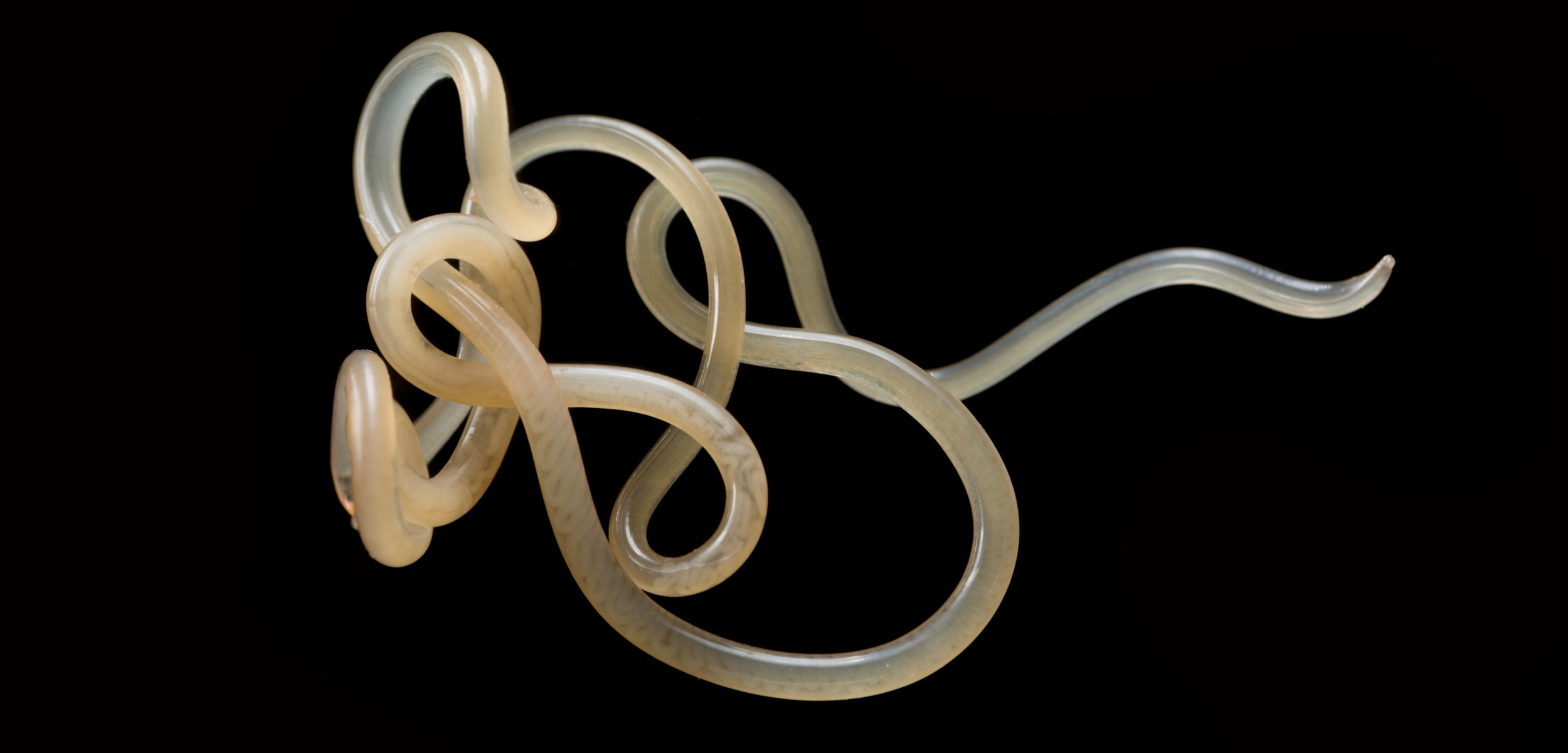Fish Parasites Are on the Rise
The number of parasitic worms in ocean fish has increased as much as 90-fold.
Article body copy
Some fish parasites are on the rise, bringing with them risks to human health and fisheries-based economies. Now researchers have a new way to track their numbers—by digging into old records and museum samples.
Recent years have seen alarming outbreaks of disease in fish and other marine species, including one that caused a massive die-off of sea stars in the northeast Pacific starting in 2013. But it has not been clear whether this uptick in illnesses was due to an actual increase in the number of pathogens and parasites, or whether scientists were just noticing them more often because they were paying closer attention. Chelsea Wood, who studies marine parasites at the University of Washington in Seattle, set out to track how some parasites have changed over time—and had to get creative to find answers.
First, Wood and her team trawled through old journal articles to track the long-term change in two genera of parasitic nematode worms—Anisakis and Pseudoterranova—that infect a variety of marine creatures, including fish, shellfish, whales, and seals, and that can make humans sick if consumed in raw or undercooked fish or squid. Because of the public health concern, scientists have monitored these parasites over the past few decades. Wood found that the average number of Anisakis per fish increased 90-fold globally between 1962 and 2015, and Pseudoterranova increased by one and a half times between 1978 and 2015.
The increase means “it might be a little bit riskier to consume raw seafood today than it was in the 1970s,” says Wood, though she adds that public health measures in developed countries are good enough to keep the delicacy safe, and she still eats sushi regularly. The worms are a bigger problem for their aquatic hosts—infected fish can suffer organ damage, and weakened fish are more likely to get sick and die.
To look even further into the past, the team delved into the preserved fish collection at the University of Washington’s Burke Museum, which Wood describes as being like a parasite time capsule. “The parasites are preserved along with the specimen and are still detectable,” she says. “You can see what the parasites in a fish from 1888 were like.”
Looking at 306 English sole collected from Puget Sound, Washington, the researchers found a previously unreported eight-fold increase in numbers of the nematode parasite Clavinema mariae since the 1930s. While this parasite does not affect humans, it is a significant pest in the English sole fishery—no one wants to eat a fish full of worms.
Skylar Hopkins, a parasite ecologist at Virginia Tech, says that the ability to study historical parasite loads for comparative purposes is a big deal for ecologists. “This opens up a whole new world for studying the past,” she says.
It’s not clear what exactly has caused the changes in parasite loads in fish, but it’s likely that humans have played a role. In the case of the sole, for example, agricultural runoff in Puget Sound could boost the population of copepods that are both a host for the nematodes and an important food source for the fish.
Wood says different parasites might react to changes in their environment in different ways. In areas with heavy fishing pressure, parasites with complex, multi-host life cycles tend to decline, she has found, while ones with simpler life cycles tend to increase. “These are just two stories,” she says. “There are many more and we’re curious about all of them.”
Hopkins says it’s important to understand how environmental changes affect parasites—even the ones that don’t generally impact humans—to predict how they might react to changes in the future, and how those changes could cascade through the ecosystem. “Parasites are embedded in food webs,” she says. “When you bump one thing out of whack, it causes changes to the whole system.”

